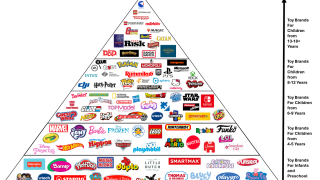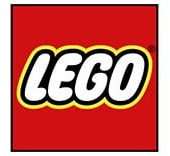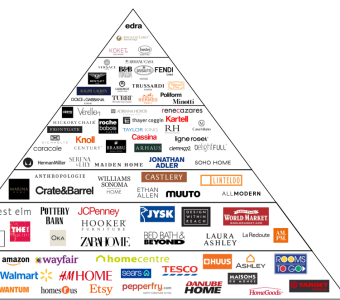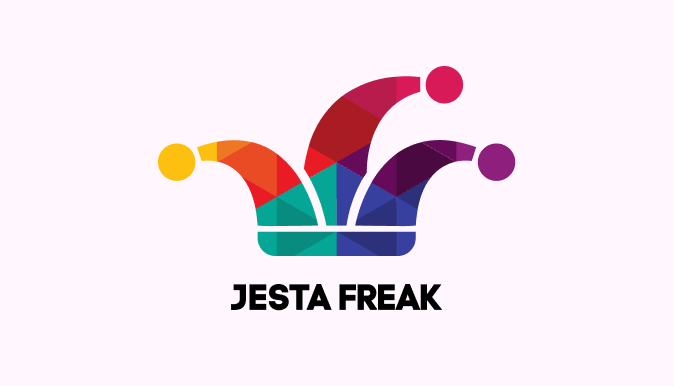The festive season is just around the corner, bringing holiday cheer to many countries in the coming months. For adults, parents and children it is the hectic period to receive and provide gifts. In the United States, November brings Thanksgiving along with the shopping excitement of Black Friday and Cyber Monday, kicking off the holiday season. And as December approaches, it is time to send wish lists to Santa or to Sinterklaas in the Netherlands.
Jesta Freak has created the Toys and Games Brands Pyramid that can not only guide you for the festive months, but perhaps also the children birthday parties and other moments where children, teenagers and some adults demand the latest and the newest toys and experiences.
With the growing emphasis on digital products and games, there is an opportunity to showcase a diverse range of toy options and functionalities. By highlighting choices for babies, toddlers, young children, teenagers, and even adults who cherish their childhood hobbies, we can provide a comprehensive guide that caters to all ages and interests. This approach not only celebrates the timeless appeal of toys but also acknowledges the evolving preferences across generations.
The Jesta Freak Toys and Games Brands Pyramid
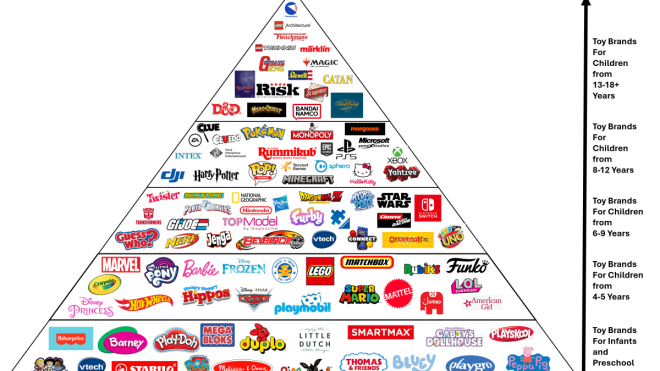
Source: Jesta Freak
The Toys and Games Brands Pyramid provides a hierarchical overview of toy brands and associated products. It provides an excellent overview of different toy categories and types, by brand and age group.
Please note that while certain brands may be recommended for specific age brackets, they are often enjoyed by older age groups as well. These brands are designed to be accessible from the indicated starting age, but their appeal frequently extends to a broader audience.
Importance of Toys and Games

First and foremost, toys and games are designed for play and entertainment, primarily for children but often enjoyed by adults as well. They promote imagination, motor skills, cognitive development, and even educational growth.
Toys and games therefore can be categorized into different developmental needs from educational toys focus on skill-building through puzzles, science kits, and coding robots, while action figures and dolls encourage imaginative play with characters from movies and stories.
Building and construction toys like Duplo, Mega Bloks and LEGO stimulate creativity and spatial awareness, and outdoor toys such as inflatable pools, bicycles and trampolines are ideal for active play. Plush and stuffed animals offer comfort and are often a child’s first companion. Pretend play toys allow kids to mimic adult roles, using items like kitchen sets and dress-up costumes, fostering role-play and creativity. Arts and crafts kits support fine motor skills through coloring and painting, while board games and puzzles promote social skills, strategy, and critical thinking.
Electronic and interactive toys use technology to engage children with lights, sounds, and interactive screens, while remote-controlled vehicles like RC cars and drones provide excitement for those fascinated by movement and machinery.
Electronic/computer/video games are increasingly for many children the dominant toy, and as the traditional toys these electronic games provide various experiences and learning categories such as stimulating imagination, developing motor skills, cognitive development, knowledge, and educational growth using digital platforms.
But perhaps we should see the video games and traditional toys as interconnected, with toys adopting digital elements and games inspiring physical play. This crossover creates rich, multi-dimensional experiences that blend hands-on and screen-based play, appealing to players of all ages.

Traditional toy and games categories align with popular video game genres such as action & adventure: video games like The Legend of Zelda inspire physical play with action figures and adventure playsets, or LEGO and Playmobil’s themed sets, bringing virtual worlds to life. Games like Final Fantasy and Pokémon encourage role-play and link to imaginative toys, such as Barbie, Dungeons & Dragons, Star Wars, G.I. Joe figurines and fantasy costume sets, allowing players to craft their own stories. Finally, games like Animal Crossing and The Sims find a physical match in pretend playsets (kitchen sets, building blocks) that replicate real-life activities, merging creativity with digital gameplay.
Each category enhances playtime in unique ways, evolving alongside children’s growing interests and developmental stages. The boundaries between digital and physical play are increasingly converging, creating immersive experiences that engage children in both worlds.
Toys for Infants, and Toddlers
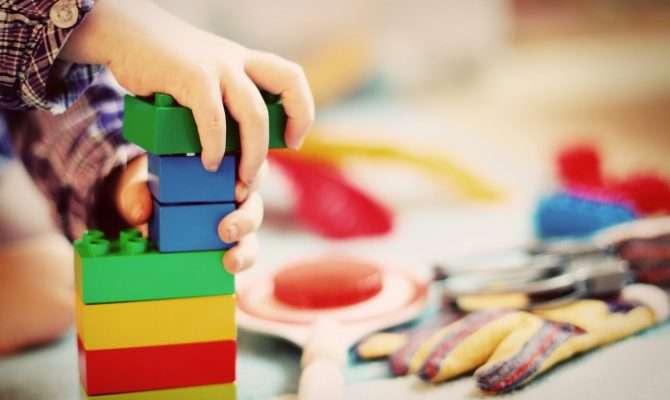
For children ages 1-4, several top toy brands provide high-quality, developmentally appropriate toys that support early learning, creativity, and motor skills. In this category we have identified several brands:
1. Fisher-Price and VTech offer interactive educational toys that introduce basic concepts and sensory engagement.
2. Little Dutch and Melissa & Doug focuses on wooden toys, push-and-pull items, and pretend play that foster hands-on exploration.
3. LEGO Duplo and Mega Blocks provide safe, durable building sets with larger pieces ideal for young hands.
4. Barney, Bing, Peppa Pig, offer comforting plush toys.
5. For arts and crafts, Play-Doh brings imaginative, tactile fun.
6. Playgro and Playskool supports sensory play.
Each of these Toy brands emphasizes safety and quality, helping young children learn and grow through play.e
Toys for Children 4-5 Years
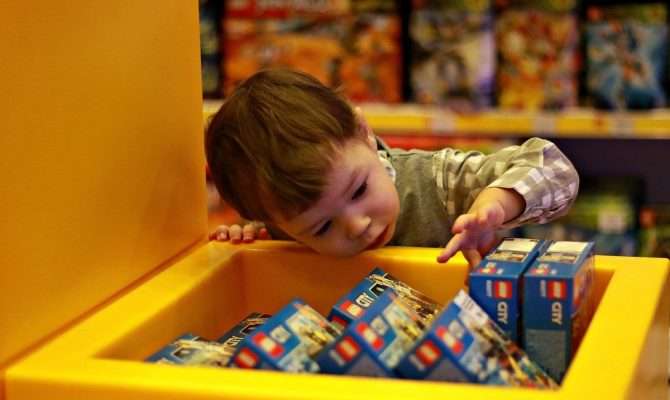
For preschoolers, top brands provide a range of toys that support learning, creativity, and active play. The Jumbo brand offers educational toys, focusing on foundational skills through engaging activities. Crayola leads in arts and crafts, with products like washable markers.
For imaginative play, Barbie, Disney Princess, Disney Frozen, and Disney Cars offer popular dolls and action figures, allowing children to explore storytelling. Building toys from LEGO, and Playmobil fosters creativity and spatial awareness, with colorful sets like the LEGO Duplo Classic Brick Box and Playmobil School Bus. These brands provide a well-rounded play experience, supporting preschoolers’ curiosity and development.
Toys for Children 6-9 Years
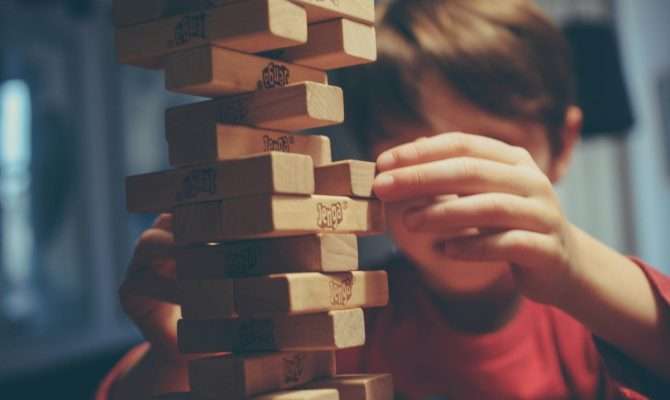
For children in early- and elementary, toys that encourage role-playing, skill-building, and encourage physical activity are especially appealing. Role-playing toys become more detailed, with doctor kits, dress-up costumes, and playhouses that support complex storytelling.
Educational toys such as science kits and flashcards build foundational skills in reading and math. Arts and crafts kits become more advanced, including options like model clay and painting kits, which allow kids to express creativity. Children in this age group can also start enjoying basic remote-controlled vehicles and simple board games with rules, which promote social skills and critical thinking.
A variety of brands provide engaging toys that foster imagination, learning, and creativity. Brands for elementary children such as Melissa & Doug and Play-Doh are also used as pretend play and role-playing toys like doctor kits and vintage play kitchens, enabling kids to explore real-world scenarios.
In educational toys, National Geographic leads with interactive learning tools such as the Genius Starter Kit supporting early reading and science skills. Creativity for Kids provides arts and crafts kits, including rock painting and tracing pads, to inspire creative expression. For vehicle enthusiasts, Hot Wheels, Carrera, and Scalextric bring excitement with track-building sets and cars.
Finally, Ravensburger, and Hasbro, and offer board games and puzzles. Other well-known board games include Connect 4, Jenga, Guess Who?, Operation, and Twister which encourage strategy and social play, making these brands ideal for a well-rounded play experience.
Toys for Pre-Teenagers or Tweens 8-12 Years
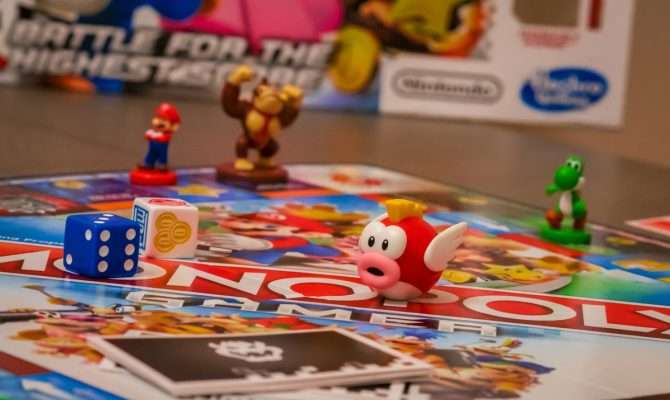
Tweens are ready for more advanced toys that focus on STEM skills, creativity, and strategic thinking. Educational toys at this stage often involve STEM-based learning, such as beginner coding kits, telescopes, and chemistry sets, which challenge them to explore science and technology.
Collectible action figures and themed toys allow tweens to delve into pop culture and explore specific interests. They also enjoy complex puzzles and board games like Monopoly, which require strategic thinking. Tweens also tend to enjoy outdoor sports toys like bicycles and roller skates, which support physical activity and independence.
Kano, Thames & Kosmos, and Snap Circuits lead in advanced educational toys, with computer kits and chemistry sets that introduce kids to STEM learning.
Collectibles and action figures from brands like Funko Pop!, Marvel Legends, and Pokemon cater to fans of pop culture and trading cards with Pokemon also being played as a video game.
DJI, and Sphero, provide exciting remote-controlled and interactive toys, such as drones and robot balls, engaging kids in tech-driven play.
For social and strategic fun, board games and puzzles from Hasbro, Ravensburger, and Asmodee include classics like Monopoly, Cluedo, Rummikub, and Yahtzee. Outdoor brands like Razor, Spalding, and Mongoose offer scooters, basketballs, and BMX bikes, encouraging active and adventurous play. PlayStation 5 and soon 6, Xbox is the base for most video games. The main video/interactive games producers include Nintendo, Tencent, Sony, Microsoft, Electronic Games, Epic Games,
Toys for Teenagers 13-18 Years
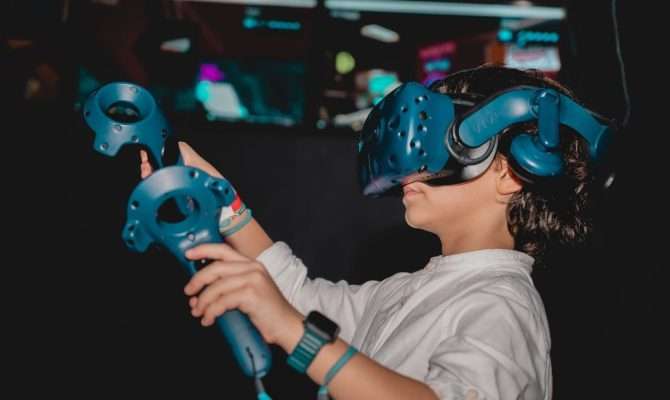
Teenagers seek toys and hobbies that are intellectually stimulating, creative, and often tech-driven. Advanced building sets, like intricate LEGO models or model planes, appeal to teens who enjoy construction and craftsmanship. Electronic and interactive toys, such as programmable robots and VR headsets, cater to teens’ tech interests.
For social interaction and strategy, games like chess and Risk. Many teens also engage in outdoor activities, often choosing high-quality sports equipment like skateboards or tennis racquets. For creative teens, arts and crafts kits for jewelry-making or painting offer an outlet for personal expression and skill development.
In the tech realm, teenagers play on their Xbox and Sony PlayStation a wide range of video games such as Fortnite, Call of Duty, Grand Theft Auto, and Roblox. We are also increasingly see the use of AR/VR headsets and tools, engaging teens in interactive digital play.
For social and strategic fun, board games such as Risk, Scrabble, Catan, Taboo, Trivial Pursuit, Hero Quests, and Dungeons & Dragons are extremely popular.
What about adults?
Many major toy brands and games brands are being enjoyed well into old age. A group of enthusiasts has made toys and games their primary hobby, turning them into prized collectibles that offer both nostalgia and monetary value.
Additionally, video games have seen immense popularity among adults, with consoles like the Xbox, PlayStation or PCs are serving as primary platforms for gameplay. Classic games and puzzles remain beloved pastimes, from Monopoly, Scrabble to chess and Risk, providing entertainment and mental challenges across generation.
Finally, when adults have children or grandchildren, guess what happens? They either continue or rediscover the joy of toys and games, passing down cherished memories while creating new ones, keeping the magic alive across generations. This is especially true during the festive season, when gifting or receiving a toy or game becomes a shared experience, sparking laughter, bonding, and timeless fun with family and friends.
Do you have a favourite game or love a certain toy? Tell us about it and join our brand communities where we share our and other people’s love and passion for brands. Complete your personal brand experience profile and unlock your full consumer potential! Discover a world of brands and seize opportunities to make your voice heard.
Visit Jestafreak.com to explore in-depth insights into consumer behavior, brands, and much more.
Engage directly with our community on our Home Page.
